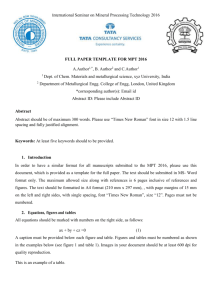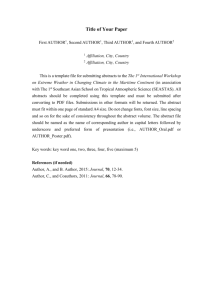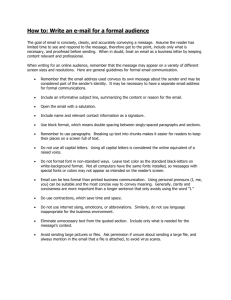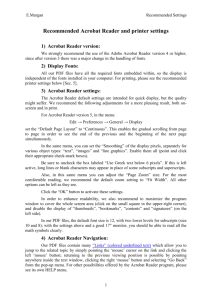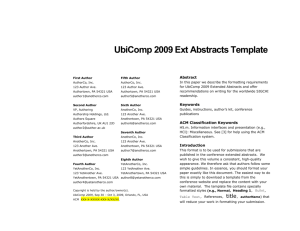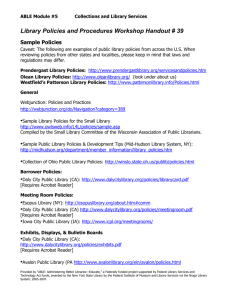CHEMCON 2015 Paper Template: Chemical Engineering
advertisement
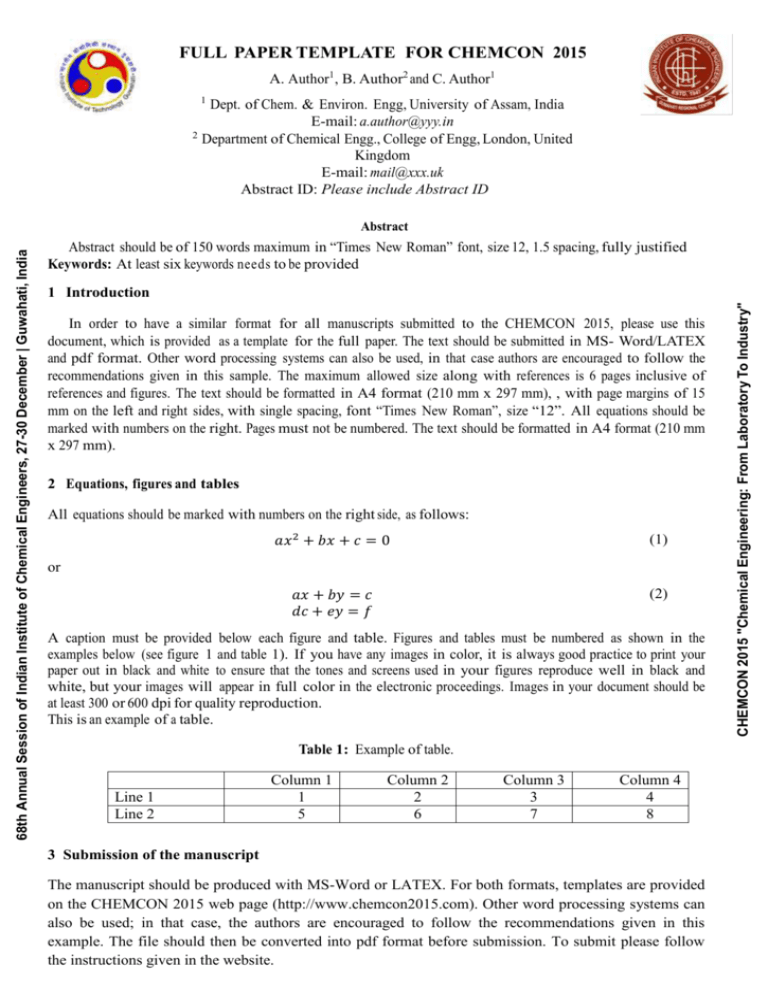
FULL PAPER TEMPLATE FOR CHEMCON 2015 A. Author1 , B. Author2 and C. Author1 1 Dept. of Chem. & Environ. Engg, University of Assam, India E-mail: a.author@yyy.in 2 Department of Chemical Engg., College of Engg, London, United Kingdom E-mail: mail@xxx.uk Abstract ID: Please include Abstract ID Abstract should be of 150 words maximum in “Times New Roman” font, size 12, 1.5 spacing, fully justified Keywords: At least six keywords needs to be provided 1 Introduction In order to have a similar format for all manuscripts submitted to the CHEMCON 2015, please use this document, which is provided as a template for the full paper. The text should be submitted in MS- Word/LATEX and pdf format. Other word processing systems can also be used, in that case authors are encouraged to follow the recommendations given in this sample. The maximum allowed size along with references is 6 pages inclusive of references and figures. The text should be formatted in A4 format (210 mm x 297 mm), , with page margins of 15 mm on the left and right sides, with single spacing, font “Times New Roman”, size “12”. All equations should be marked with numbers on the right. Pages must not be numbered. The text should be formatted in A4 format (210 mm x 297 mm). 2 Equations, figures and tables All equations should be marked with numbers on the right side, as follows: 𝑎𝑥 2 + 𝑏𝑥 + 𝑐 = 0 (1) 𝑎𝑥 + 𝑏𝑦 = 𝑐 𝑑𝑐 + 𝑒𝑦 = 𝑓 (2) or (3) A caption must be provided below each figure and table. Figures and tables must be numbered as shown in the examples below (see figure 1 and table 1). If you have any images in color, it is always good practice to print your paper out in black and white to ensure that the tones and screens used in your figures reproduce well in black and white, but your images will appear in full color in the electronic proceedings. Images in your document should be at least 300 or 600 dpi for quality reproduction. This is an example of a table. Table 1: Example of table. Line 1 Line 2 Column 1 1 5 Column 2 2 6 Column 3 3 7 Column 4 4 8 3 Submission of the manuscript The manuscript should be produced with MS-Word or LATEX. For both formats, templates are provided on the CHEMCON 2015 web page (http://www.chemcon2015.com). Other word processing systems can also be used; in that case, the authors are encouraged to follow the recommendations given in this example. The file should then be converted into pdf format before submission. To submit please follow the instructions given in the website. CHEMCON 2015 "Chemical Engineering: From Laboratory To Industry" 68th Annual Session of Indian Institute of Chemical Engineers, 27-30 December | Guwahati, India Abstract Figure 2: Photo of heat exchanger 4 Producing and testing PDF files We recommend that you produce a PDF version of your submission well before the final deadline. Test your PDF file by viewing or printing it with the same software we will use when we receive it, Adobe Acrobat Reader Version 7. This is widely available at no cost. Note that most reviewers will use a North American/European version of Acrobat reader, which cannot handle documents containing non- North American or non-European fonts (e.g. Asian fonts). Please therefore do not use Asian fonts, and verify this by testing with a North American/European Acrobat reader (obtainable as above). Something as minor as including a space or punctuation character in a two byte font can render a file unreadable. 5 References and Acknowledgements References should appear at the end of the abstract. List citations alphabetically in the reference section. As examples we cite the article by David et al. (1998) or the book by Batchelor (1967). If the citations are in brackets please use this format (Fitt and Gonzalez, 2006). Your references should be published materials accessible to the public. Internal technical reports may be cited only if they are easily accessible (i.e., you provide the address for obtaining the report within your citation) and may be obtained by any reader for a nominal fee. Proprietary information may not be cited. Private communications should be acknowledged in the main text, not referenced (e.g., Robertson, personal communication). Acknowledgements are optional and should be placed just before the references section. Acknowledgements We thank all contributors for their cooperation. References G. K. Batchelor. An Introduction to Fluid Dynamics. Cambridge University Press. 1967. T. David, S. Smye, T. Dabbs, and T. James. A model for the fluid motion of vitreous humour of the human eye during saccadic movement. Phys. Med. Biol., 43:1385-1399, 1998. A. D. Fitt and G. Gonzalez. Fluid mechanics of the human eye: Aqueous humour in the anterior chamber. Bull. Math. Biol., 68(1):53-71, 2006. CHEMCON 2015 "Chemical Engineering: From Laboratory To Industry" 68th Annual Session of Indian Institute of Chemical Engineers, 27-30 December | Guwahati, India Figure 1: Control structure of distillation column
